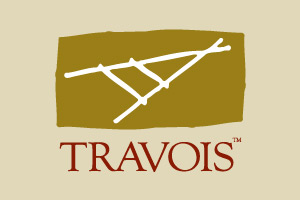We know our housing clients look forward to the day when that last unit is built, the investor’s final construction equity disbursement has come through, and tenants start moving in. But there’s an added incentive to look forward to at the end of the construction period – the developer fee — also referred to as the final pay.
What is the final pay or developer fee? The developer fee is compensation to the project developer (in this case, the tribe, housing authority and/or Tribally Designated Housing Entity) for the time and resources spent to develop the project. This is basically the incentive for developers (often times for-profit developers) to develop affordable housing.
This fee is included in the development budget and is generally released by the tax credit equity investor after:
- construction is completed,
- the project’s Form 8609s have been received from the state allocating agency,
- and the final “checklist” of items required by the investor have been satisfied.
This release of funds is often called the “final pay” as this is the last payment issued by the investor and may also include the funding of various reserve accounts (i.e. operating reserves, compliance reserves).
How do you get the developer fee? Payment of the developer fee is contingent on several criteria outlined in the project’s Limited Partnership Agreement (LPA). These criteria typically include stabilized occupancy in the project, final Form 8609s filed with the Internal Revenue Service (IRS), satisfactory completion of radon testing, final as-built American Land Title Association (ALTA) surveys, and updated Title Status Reports (TSRs) or final title policies, to name a few.
Travois staff work with the tribe/TDHE to collect final pay items for delivery to the equity investor. As you might imagine, post-construction requirements become extremely hectic when the focus turns to leasing the units and satisfying requirements for receipt of the 8609s. Sometimes the seemingly “smaller” items get lost in the mix.
The best time to start examining this list of items is midway through construction and again nearing construction completion.
What can you do with the developer fee? The simple answer is “whatever you like.” Pursuant to Public Law 110-411, the Native American Housing Assistance and Self Determination Reauthorization Act of 2008, NAHASDA was amended to specifically exclude LIHTC developer fees from “program income.”
Typically a tribe/TDHE will use the proceeds of the developer fees to reimburse itself for soft costs and construction expenses incurred during development. In other instances, the developer fee is set aside as seed money for future housing development or a subsequent LIHTC project. Whichever it may be, it is important to remember that these funds are non-restricted funds and can be used however the tribe/TDHE wishes.
Why is the developer fee so important? The final pay compensates the Tribe/TDHE for all the hard work it took to make the project happen. The dollar amount is significant and can be between 10-18 percent of the total development costs of the entire project.
In many cases, it provides additional funding to continue operations or even start a new project. In all cases, it marks the successful completion of the long — and often initially daunting — list of reports, inspections, surveys and other deliverables outlined at the start of the project.
Receiving the final pay is definitely something to be proud of. In the past 18 months alone, 21 Travois clients have received final pays on 28 projects for a combined total of more than $13 million. Congratulations to those tribes and tribal housing authorities for meeting such an important benchmark!


